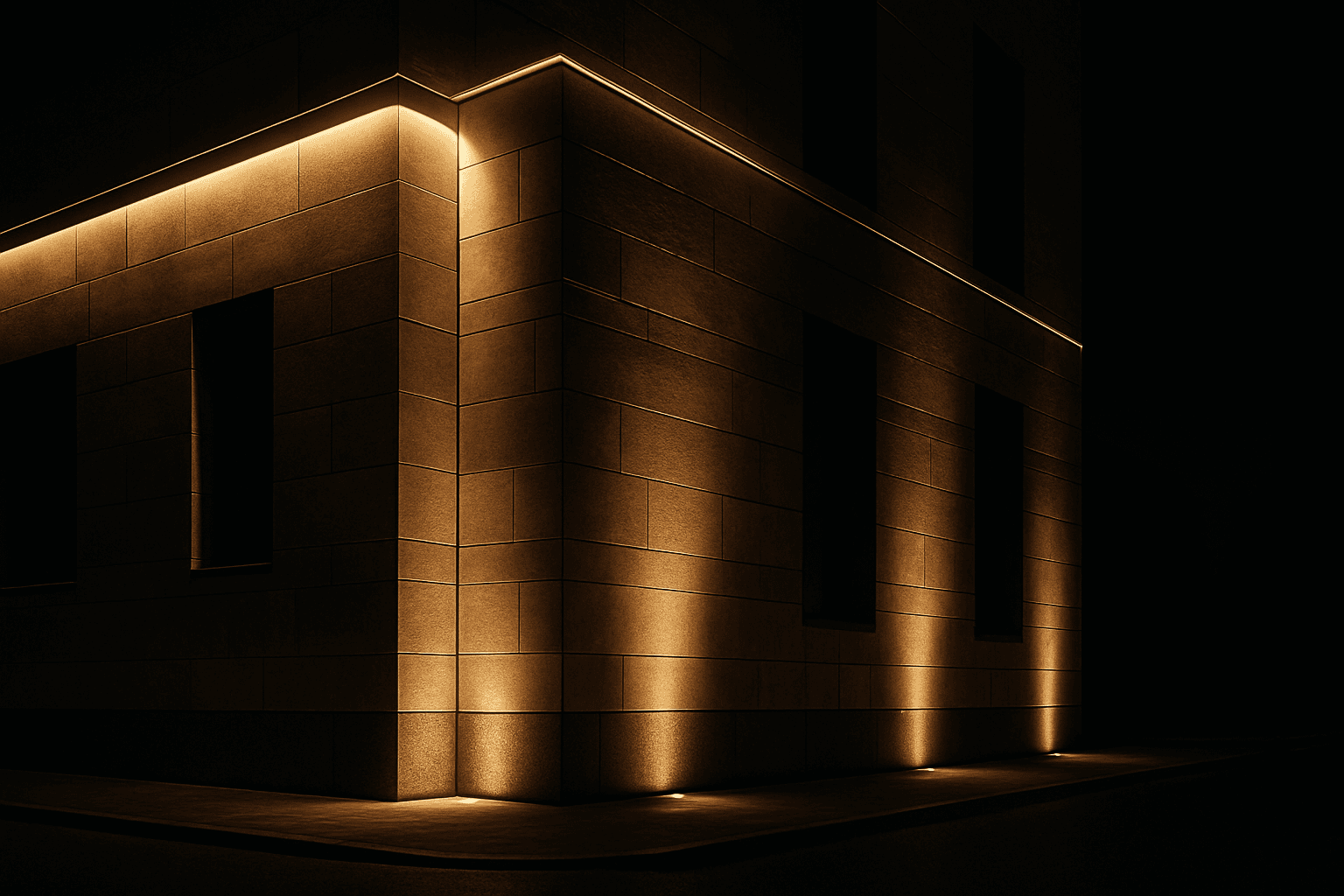Light is perhaps the most powerful yet subtle tool in the architect's palette. Beyond its functional role of providing visibility, architectural lighting shapes our perception of space, influences our emotional responses, and articulates the formal qualities of a building. At VERIAN Architecture, we approach lighting design as an integral aspect of the architectural concept rather than a technical afterthought.
Light as a Material
We consider light a building material in itself—one that is dynamic, ephemeral, and transformative. Just as we would carefully select concrete for its compressive strength or wood for its warmth and texture, we design with light for its unique properties and effects.
Natural light brings diurnal rhythms into buildings, connecting occupants to the passage of time and changing seasons. Artificial lighting offers controllable illumination that can be sculpted for specific effects. The interplay between these two sources creates the complete lighting experience of a space.

Revealing Architecture Through Shadow
In minimalist architecture, light gains much of its power through its counterpoint: shadow. The interplay between illuminated and darkened surfaces reveals form, texture, and spatial depth. As Louis Kahn observed, 'No space, architecturally, is a space unless it has natural light.'
We design specific moments where light washes across textured surfaces—concrete with its subtle board-formed patterns, stone with its natural variations, or plaster with its hand-troweled imperfections. These shadow-play moments become highlights in the experience of a building, changing throughout the day and across seasons.
Circadian Considerations
Contemporary lighting design must acknowledge the biological impact of light on human occupants. Our circadian rhythms—the internal processes that regulate sleep-wake cycles—are profoundly influenced by light exposure, with implications for health, mood, and cognitive function.
In residential and workplace projects, we design lighting systems that support healthy circadian patterns. This includes maximizing daylight during morning and mid-day hours, then transitioning to warmer, dimmer artificial lighting in evening spaces. Smart lighting systems can automate these transitions, subtly shifting color temperature and intensity throughout the day.
Hidden Sources
Minimalist spaces often benefit from concealing light sources, creating the impression that surfaces themselves are luminous or that light is entering mysteriously from unseen origins. Cove lighting, recessed channels, and backlit elements achieve this effect, allowing the architecture itself to appear as the source of illumination.
In a recent residential project, we designed a floating stair with integrated lighting in the underside of each tread. The light source remains invisible to someone ascending the stairs, yet each step appears to hover on a cushion of light, creating both functional illumination and a poetic spatial moment.
Lighting Layers
Even in the most minimalist spaces, a single lighting approach rarely suffices. We design in layers: ambient lighting provides general illumination, task lighting supports specific activities, and accent lighting highlights architectural features or art pieces. These layers can be adjusted independently, allowing spaces to be tuned for different activities and times of day.
The control systems for these layers are equally important. Thoughtfully positioned switches, dimmers, and smart controls ensure that lighting can be intuitively adjusted. In high-end residential projects, we often program scene-based systems that configure multiple lighting elements with a single command.
Energy Consciousness
Lighting accounts for a significant portion of a building's energy consumption. Our approach balances aesthetic goals with sustainability considerations, utilizing high-efficiency LED sources, presence sensors in appropriate locations, and daylight harvesting strategies that automatically adjust artificial lighting in response to available natural light.
These strategies not only reduce energy usage but often enhance the quality of the lighting design, as when daylight sensors create subtle, automatic transitions throughout the day that might otherwise require manual adjustment.
Exterior Illumination
Architectural lighting extends beyond interior spaces to shape how buildings are perceived at night. Thoughtful exterior lighting can articulate a building's form, highlight key features, and integrate the structure with its surroundings.
In urban contexts, we are mindful of light pollution, directing illumination precisely where needed and avoiding excessive brightness that contributes to sky glow. Often, the most successful exterior lighting schemes are the most restrained, revealing just enough of the architecture to create a compelling nighttime presence.
Conclusion
At VERIAN Architecture, we believe that lighting design is inseparable from architectural design itself. The way light enters, moves through, and illuminates a space is fundamental to how that space will be experienced. By considering lighting from the earliest conceptual phases rather than as a technical afterthought, we create buildings where light becomes an essential expressive element—revealing forms, guiding movement, and connecting occupants to both the built and natural worlds.
